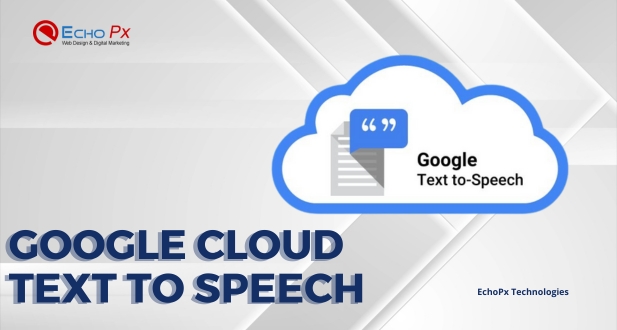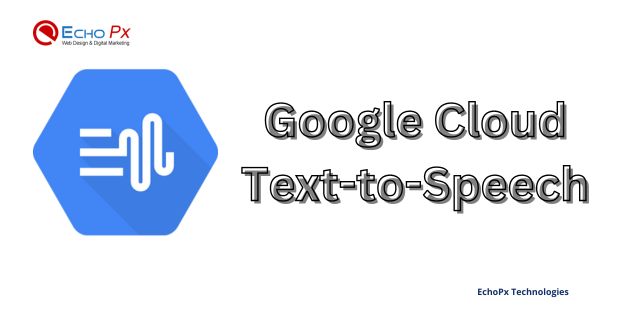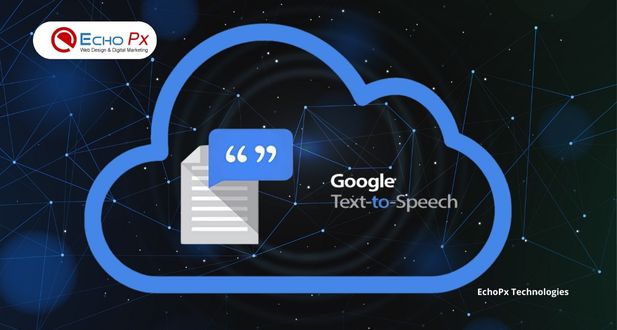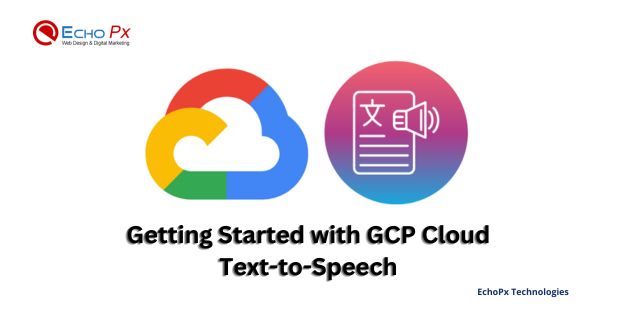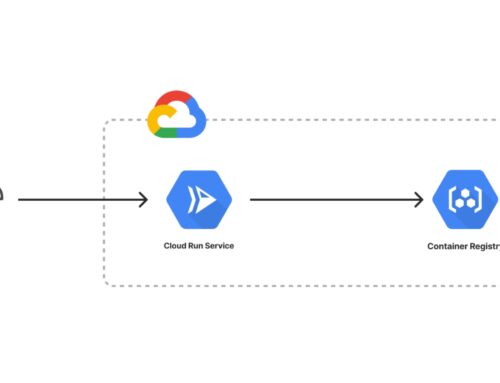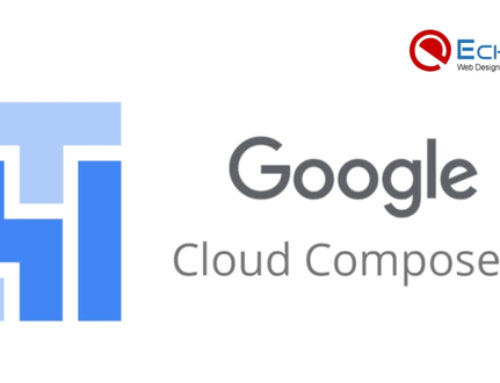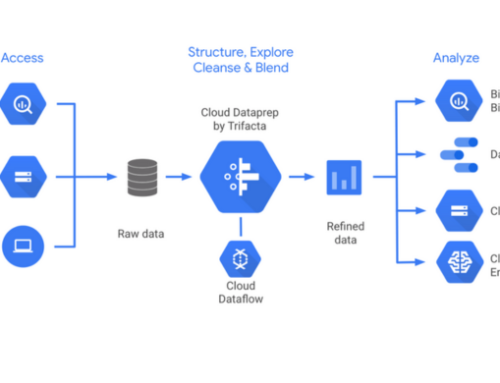Introduction
Definition of GCP Cloud Text-to-Speech
GCP Cloud Text-to-Speech (TTS) stands as a cutting-edge cloud service designed to convert written text into natural-sounding speech. Leveraging state-of-the-art machine learning techniques, this platform excels in synthesizing voices that closely mimic the nuances of human speech. Developers can seamlessly integrate GCP Cloud TTS into a diverse array of applications, transforming text-based content into spoken audio. This transformative capability enhances accessibility, communication, and overall user experiences.
Overview of Text-to-Speech Technology
The evolution of text-to-speech technology has been remarkable, progressing from basic voice synthesizers to sophisticated systems capable of producing highly natural-sounding speech. At its core, text-to-speech involves the conversion of written text into a sequence of phonemes, the fundamental units of sound in a language. These phonemes are then translated into acoustic waveforms, replicating the natural intonations and inflections present in human speech.
Significance in Modern Communication
Text-to-speech technology plays a pivotal role in modern communication, contributing significantly to diverse applications and enriching user experiences across various domains:
- Accessibility: Revolutionizing accessibility for visually impaired individuals and those with reading difficulties, providing access to written content through spoken audio.
- Interactive Applications: Empowering voice assistants, chatbots, and interactive applications, offering users a natural and intuitive means of interacting with technology.
- Content Creation and Consumption: Facilitating the creation of audiobooks, podcasts, and other audio-based content, expanding audience reach and engagement.
- Education and Learning: Integrating into eLearning platforms, supporting language learning tools, and enhancing language acquisition for students.
- Customer Service and Support: Powering interactive voice response (IVR) systems for automated customer assistance and real-time text-to-speech conversion for customer support chatbots.
The multifaceted impact of GCP Cloud Text-to-Speech extends across accessibility, interactivity, content creation, education, and customer service, making it a versatile and indispensable tool in the realm of modern communication.
Understanding GCP Cloud Text-to-Speech
Core Concepts
At the heart of GCP Cloud Text-to-Speech are fundamental concepts that underpin its functionality:
- Text Synthesis Algorithms: GCP Cloud Text-to-Speech employs advanced text synthesis algorithms that analyze input text and generate corresponding speech signals. These algorithms are trained on diverse linguistic patterns to produce natural and coherent speech.
- Neural Network Models: The platform utilizes neural network models to capture the intricacies of human speech. These models enhance the quality of synthesized voices by incorporating nuances such as intonation, rhythm, and emphasis.
- Prosody and Intonation Control: Core to the user experience is the ability to control prosody and intonation. Developers can fine-tune these aspects, tailoring the synthesized speech to suit specific applications, whether it’s conveying information, providing emotional context, or guiding users through interactions.
Key Components of GCP Cloud Text-to-Speech
To comprehend the workings of GCP Cloud Text-to-Speech, it’s essential to grasp its key components:
- Text-to-Speech API: The API serves as the primary interface for developers to integrate text-to-speech capabilities into their applications. It offers a range of parameters and customization options, allowing for a tailored synthesis experience.
- Voice Models: GCP Cloud Text-to-Speech provides a selection of pre-built voice models with diverse accents and languages. Developers can choose the most suitable voice to align with the application’s target audience and context.
- Audio Profiles: Different applications may require specific audio characteristics. GCP Cloud Text-to-Speech offers audio profiles that allow developers to adjust parameters such as pitch and speaking rate, ensuring optimal output for varied scenarios.
Supported Text Formats and Languages
GCP Cloud Text-to-Speech offers extensive support for various text formats and languages:
- Text Formats: Developers can input text in multiple formats, including plain text, SSML (Speech Synthesis Markup Language), and Speech Adaptation Markup Language (SAML). This flexibility accommodates diverse content types and applications.
- Multilingual Capabilities: The platform supports a wide array of languages, facilitating global application deployment. This multilingual capability ensures that developers can reach a broad audience with their synthesized speech content.
Use Cases
GCP Cloud Text-to-Speech finds application across a spectrum of scenarios:
- Accessibility Solutions: Enabling visually impaired individuals to access written content through synthesized speech, enhancing inclusivity.
- Interactive Voice Response (IVR) Systems: Powering IVR systems in customer service applications, automating responses and providing a seamless user experience.
- E-Learning and Education: Enhancing eLearning platforms by converting text-based educational content into spoken format, catering to different learning preferences.
- Entertainment and Media: Facilitating the creation of audio-based content such as podcasts and audiobooks, broadening the reach of entertainment media.
- Navigation and Guidance Systems: Integrating into navigation and guidance applications to provide spoken directions and information, improving user interaction.
Understanding these core concepts, key components, supported formats, languages, and diverse use cases lays the foundation for effective utilization of GCP Cloud Text-to-Speech in various applications.
Getting Started with GCP Cloud Text-to-Speech
Setting Up GCP Cloud Text-to-Speech
Embarking on the journey with GCP Cloud Text-to-Speech involves initial setup steps to ensure a seamless integration process:
- GCP Project Creation: The first step is to create a Google Cloud Platform (GCP) project. This project serves as the container for resources and configurations related to your applications.
- Enabling the Text-to-Speech API: Within the GCP Console, navigate to the API & Services dashboard and enable the Text-to-Speech API. This step grants your project the necessary permissions to utilize the Text-to-Speech service.
- Authentication Setup: To interact with the Text-to-Speech API, you’ll need to set up authentication. Generate API credentials, such as API keys or service account keys, to authenticate requests securely.
Using the Text-to-Speech API
With the setup complete, developers can dive into leveraging the capabilities of the Text-to-Speech API:
- API Endpoints and Methods: Explore the API’s various endpoints and methods, each catering to specific functionalities. For instance, the text.synthesize method allows you to synthesize speech from input text.
- Request Parameters: Understand the parameters that can be included in API requests. These parameters range from specifying the input text and voice selection to controlling audio profiles, pitch, and speaking rate.
- Response Handling: Learn how to handle the API’s responses effectively. The API returns synthesized speech in the form of audio data, and developers can customize their applications to play, save, or stream this audio content as needed.
Customization Options
GCP Cloud Text-to-Speech provides a suite of customization options, allowing developers to tailor the synthesized speech to meet specific requirements:
- Voice Selection: Explore the diverse set of pre-built voices available for different languages and accents. Choose voices that align with your application’s context and target audience.
- Audio Profile Adjustment: Fine-tune audio characteristics such as pitch and speaking rate to achieve the desired emotional or contextual tone in the synthesized speech.
- SSML Integration: Dive into the capabilities of Speech Synthesis Markup Language (SSML). Developers can use SSML to add expressive elements, control pronunciation, and insert pauses for a more natural flow of speech.
- Batch Processing: For scenarios involving large volumes of text, understand how to implement batch processing to efficiently synthesize speech for multiple pieces of content.
Getting started with GCP Cloud Text-to-Speech involves a seamless setup process, interfacing with the Text-to-Speech API, and exploring customization options to tailor the synthesized speech to your application’s unique needs.
Advanced Features and Customization
WaveNet Voices and High-Quality Synthesis
GCP Cloud Text-to-Speech introduces advanced voice synthesis with WaveNet technology, setting a new standard for natural-sounding speech. WaveNet voices are meticulously crafted to capture the nuances of human speech, delivering an exceptional level of realism. With a focus on high-quality synthesis, WaveNet voices provide a more engaging and lifelike auditory experience.
Understanding WaveNet technology involves delving into its deep neural network architecture. Unlike traditional text-to-speech methods, WaveNet models directly generate waveforms, allowing for a more accurate representation of human speech patterns. This results in smoother intonations, natural pauses, and a broad spectrum of voice variations.
Custom Voice Models
Tailoring the voice in your application to align with specific brand identities or user preferences is made possible through the creation of custom voice models. GCP Cloud Text-to-Speech enables developers to train custom voice models using existing datasets, allowing for the synthesis of speech with a personalized touch.
The process involves:
- Dataset Preparation: Collect and prepare a dataset that reflects the characteristics and nuances you want in the custom voice. This can include recordings of target speakers or other relevant audio data.
- Model Training: Utilize GCP’s training infrastructure to develop a custom voice model. The system learns from the provided dataset, capturing the unique traits and nuances of the chosen speakers.
- Integration: Once trained, seamlessly integrate the custom voice model into your Text-to-Speech application. Developers can specify the use of custom voices in API requests, ensuring a consistent and personalized user experience.
Prosody and Speech Emotion Customization
Injecting emotion and expressive elements into synthesized speech enhances the overall user experience. GCP Cloud Text-to-Speech allows for the customization of prosody, enabling developers to control the rhythm, intonation, and stress patterns in the generated speech. This level of control is instrumental in creating voice applications that convey a specific mood or sentiment.
The ability to adjust speech emotion adds another layer of personalization. Developers can fine-tune parameters related to pitch, speed, and energy to evoke different emotional responses. Whether it’s conveying excitement, empathy, or professionalism, customization options empower developers to craft speech that resonates with users on a deeper level.
Handling Pronunciation Challenges
Accurate pronunciation is paramount for effective communication. GCP Cloud Text-to-Speech addresses pronunciation challenges by providing tools to fine-tune the rendering of specific words or phrases. This feature is particularly valuable for applications dealing with domain-specific vocabulary, names, or technical terms.
Developers can utilize SSML (Speech Synthesis Markup Language) to guide the pronunciation of words phonetically. This ensures that even uncommon or specialized terms are articulated correctly, avoiding potential misunderstandings.
In the realm of advanced features and customization, GCP Cloud Text-to-Speech stands out with WaveNet voices, custom voice models, prosody customization, and solutions for handling pronunciation challenges. These capabilities empower developers to create speech applications that not only convey information accurately but also resonate with users on a deeply human level.
Security and Compliance Considerations
Data Privacy and Encryption Measures
Ensuring the privacy and security of user data is a top priority in any cloud-based service, and GCP Cloud Text-to-Speech is no exception. The platform implements robust data privacy measures and encryption techniques to safeguard sensitive information throughout the text-to-speech synthesis process.
- End-to-End Encryption: GCP Cloud Text-to-Speech employs end-to-end encryption to protect the confidentiality of both input text data and the synthesized speech output. This means that data is securely transmitted and stored, mitigating the risk of unauthorized access.
- Secure Communication Protocols: All communication between client applications and the GCP Cloud Text-to-Speech API occurs over secure channels using industry-standard encryption protocols. This ensures that data remains confidential during transit.
- Access Controls: GCP provides comprehensive access controls, allowing developers to manage who can access the Text-to-Speech API and perform various actions. This role-based access control (RBAC) ensures that only authorized individuals or systems can interact with the service.
Compliance with Speech Synthesis Standards
GCP Cloud Text-to-Speech aligns with industry standards and regulations related to speech synthesis, contributing to a secure and compliant environment for users and developers.
- SSML Compliance: The service supports Speech Synthesis Markup Language (SSML), a widely recognized standard for controlling aspects of speech synthesis. SSML allows developers to fine-tune the prosody, pronunciation, and other characteristics of the synthesized speech, enhancing the overall user experience.
- Regulatory Compliance: GCP Cloud Text-to-Speech adheres to relevant regulatory frameworks governing the use of speech synthesis technology. This includes compliance with data protection regulations, ensuring that user data is handled in accordance with global privacy standards.
- Transparent Policies: Google Cloud Platform maintains transparent policies regarding data usage and compliance. Developers can refer to GCP’s documentation and compliance resources to understand how Text-to-Speech aligns with regulatory requirements.
By prioritizing data privacy through encryption measures and adhering to industry standards, GCP Cloud Text-to-Speech provides a secure and compliant foundation for developers integrating text-to-speech capabilities into their applications. These considerations are essential for instilling user trust and meeting regulatory expectations in diverse use cases.
Real-world Applications and Case Studies
Industry-specific
- Implementations
GCP Cloud Text-to-Speech transcends traditional boundaries, finding application across various industries where synthesized speech adds value to user interactions and experiences.
- Healthcare:
Application: In healthcare, GCP Cloud Text-to-Speech is utilized for creating voice-enabled medical applications, facilitating better accessibility for visually impaired patients and enhancing the overall patient experience through interactive voice interfaces.
- Education:
Application: Within the education sector, the technology supports the development of interactive e-learning modules and assists students with different learning styles by providing audio-based content.
- Customer Service:
Application: Many businesses deploy GCP Cloud Text-to-Speech in customer service applications, including interactive voice response (IVR) systems. A reliable and interesting consumer experience is ensured by doing this.
Lessons Learned from Case Studies
Real-world implementations of GCP Cloud Text-to-Speech have yielded valuable insights and lessons for developers and businesses.
- Integration Challenges:
Lesson: Some case studies highlight initial challenges in integrating Text-to-Speech seamlessly into existing applications. Overcoming these challenges often involves close collaboration between developers and the Text-to-Speech API.
- User Adoption Patterns:
Lesson: Understanding user adoption patterns is crucial. Case studies reveal that the success of text-to-speech applications often depends on the naturalness and reliability of synthesized voices, impacting user engagement.
- Customization Impact:
Lesson: The degree of customization directly influences user satisfaction. Successful case studies emphasize the importance of fine-tuning speech parameters to align with the specific context and audience.
Future Trends and Innovations
As technology continues to evolve, the future of GCP Cloud Text-to-Speech holds promising trends and innovations.
- Voice Cloning Advances:
Trend: Advancements in voice cloning technologies may become a significant trend. Users may have the option to customize synthesized voices, making them more personalized and context-specific.
- Multilingual Support Enhancement:
Trend: The demand for multilingual support is expected to grow. Future innovations may focus on enhancing language capabilities, covering a broader range of global languages with improved accuracy.
- Integration with Emerging Technologies:
Trend: Integration with emerging technologies such as augmented reality (AR) and virtual reality (VR) is anticipated. This could lead to immersive and interactive experiences where synthesized speech plays a vital role.
The real-world applications and case studies of GCP Cloud Text-to-Speech underscore its versatility across industries. By learning from past implementations, developers can optimize their use of the technology and stay attuned to future trends, ensuring continued innovation and relevance.
Enhanced User Experience through TTS
GCP Cloud Text-to-Speech (TTS) stands as a transformative tool in enhancing user experiences across various applications. Its impact is notably profound in the following aspects:
- Accessibility for All:
GCP Cloud TTS plays a pivotal role in making digital content accessible to a broader audience. By converting written text into natural-sounding speech, it enables individuals with visual impairments or reading difficulties to consume content seamlessly.
- Interactive Applications:
The technology powers interactive applications, including voice assistants, chatbots, and virtual agents. This fosters a more intuitive and engaging interaction between users and technology, leading to a heightened user experience.
- Multimodal Experiences:
Integrating text-to-speech capabilities allows developers to create multimodal experiences. Combining visual and auditory elements, applications become more immersive and inclusive, catering to diverse user preferences.
- Personalization and Customization:
GCP Cloud TTS offers customization options, allowing developers to tailor the synthesized voices to align with the brand or application’s identity. This level of personalization contributes to a more engaging and branded user experience.
- Real-time Communication:
Real-time text-to-speech conversion supports live events, streaming services, and communication platforms. This ensures that users receive information promptly, contributing to a seamless and responsive user experience.
Community Engagement and Developer Resources
GCP Cloud Text-to-Speech thrives within a vibrant community of developers and enthusiasts, supported by a rich ecosystem of resources and engagement initiatives.
- Developer Community:
The GCP Cloud Text-to-Speech developer community is a hub of collaboration and knowledge sharing. Developers from diverse backgrounds contribute insights, share best practices, and address challenges, fostering a sense of community.
- Learning Resources:
Google Cloud provides an array of learning resources, including documentation, tutorials, and code samples. These resources empower developers to grasp the intricacies of GCP Cloud TTS, facilitating smooth integration and application development.
- Online Forums and Support:
Engaging in online forums and support channels allows developers to seek assistance, share experiences, and stay updated on the latest developments. This collaborative environment ensures that developers have the necessary support to overcome hurdles and optimize their implementations.
- Hackathons and Events:
Periodic hackathons and events centered around GCP Cloud Text-to-Speech provide a platform for developers to showcase their innovations, exchange ideas, and learn from each other. These events contribute to the evolution of the technology through collective creativity.
- Continuous Improvement Feedback Loop:
The feedback loop between developers and the GCP team is instrumental in the continuous improvement of the platform. Developers play a crucial role in providing insights, reporting issues, and suggesting enhancements, contributing to the refinement of GCP Cloud TTS.
Integration with GCP Ecosystem and Third-Party Platforms
GCP Cloud Text-to-Speech’s versatility extends beyond standalone applications, seamlessly integrating with the broader GCP ecosystem and various third-party platforms.
- Seamless GCP Integration:
GCP Cloud TTS integrates seamlessly with other Google Cloud services, offering a cohesive cloud computing experience. Developers can leverage GCP’s robust infrastructure, data storage, and analytics solutions to enhance the capabilities of their text-to-speech applications.
- Cross-Platform Compatibility:
The technology is designed for cross-platform compatibility, allowing developers to integrate GCP Cloud TTS into a wide range of applications, regardless of the underlying technology stack. This flexibility ensures that the benefits of text-to-speech can be harnessed across diverse platforms.
- APIs for Third-Party Integration:
GCP Cloud TTS provides APIs that enable easy integration with third-party platforms. This opens avenues for developers to incorporate text-to-speech capabilities into existing applications, expanding the reach and functionality of their projects.
- Enhanced Collaboration:
Collaborating with other GCP services such as natural language processing (NLP) and machine learning enhances the overall capabilities of applications. This collaborative approach allows developers to create more sophisticated and intelligent solutions.
- Developer-Friendly SDKs:
GCP Cloud TTS offers developer-friendly software development kits (SDKs) for various programming languages. This simplifies the integration process, enabling developers to incorporate text-to-speech features with minimal effort.
User Testimonials and Success Stories
The true measure of GCP Cloud Text-to-Speech’s impact lies in the testimonials and success stories of users who have implemented the technology in diverse scenarios.
- Industry-specific Success Stories:
Healthcare: GCP Cloud TTS has been instrumental in healthcare applications, providing accessible information to patients and aiding medical professionals in managing patient data through voice-enabled interfaces.
Education: In the education sector, GCP Cloud TTS has transformed the learning experience by making educational content more accessible through audio, benefiting students with various learning preferences.
Customer Service: Many businesses share success stories of enhanced customer service experiences. GCP Cloud TTS contributes to improved interactive voice response (IVR) systems, leading to higher customer satisfaction.
- User Testimonials:
Accessibility Impact: Users with visual impairments express gratitude for the increased accessibility GCP Cloud TTS provides, allowing them to engage with digital content effortlessly.
Innovative Applications: Developers share their experiences of developing innovative applications powered by GCP Cloud TTS, emphasizing the technology’s role in creating engaging and user-friendly interfaces.
Lessons Learned:
Success stories often include insights into the lessons learned during the implementation process. This information is invaluable for other developers considering or currently working on GCP Cloud TTS projects.
Continuous Improvement:
User testimonials contribute to the continuous improvement of GCP Cloud TTS by highlighting areas of excellence and suggesting areas for enhancement. This iterative feedback loop ensures that the technology evolves in alignment with user needs and expectations.
Conclusion
GCP Cloud Text-to-Speech (TTS) emerges as a transformative force in modern communication and user experiences. With a robust foundation in converting text into natural-sounding speech, this cloud-based service transcends traditional boundaries, impacting accessibility, interaction, and content consumption across various sectors.
The significance of GCP Cloud TTS is most evident in its role in accessibility. By providing visually impaired individuals and those with reading difficulties a means to engage with digital content through spoken audio, the service contributes to a more inclusive and equitable digital landscape. Its integration into interactive applications, such as voice assistants and chatbots, further elevates user experiences by offering intuitive and engaging interactions.
As technology evolves, GCP Cloud TTS stands at the forefront, enabling multimodal experiences that combine visual and auditory elements. This not only enhances content creation, including audiobooks and podcasts, but also finds applications in education, eLearning, and customer service, where natural-sounding speech significantly impacts engagement and comprehension.
The community surrounding GCP Cloud TTS plays a crucial role in its ongoing success. The collaboration among developers, the abundance of learning resources, and the continuous feedback loop ensure that the technology remains dynamic and responsive to the evolving needs of its users.
Moreover, GCP Cloud TTS seamlessly integrates into the broader Google Cloud Platform ecosystem and various third-party platforms, offering developers unparalleled flexibility and compatibility. This integration extends the capabilities of applications, fostering collaboration and innovation.
The user testimonials and success stories bear witness to the real-world impact of GCP Cloud TTS. From industry-specific implementations in healthcare and education to improved customer service experiences, the technology has left an indelible mark. Lessons learned from these experiences contribute to the continuous improvement of the platform.
In essence, GCP Cloud Text-to-Speech is not merely a technological tool but a catalyst for positive change, fostering accessibility, engagement, and innovation. As it continues to evolve, the service stands as a testament to the boundless possibilities when cutting-edge technology meets the diverse needs of users and developers alike.
